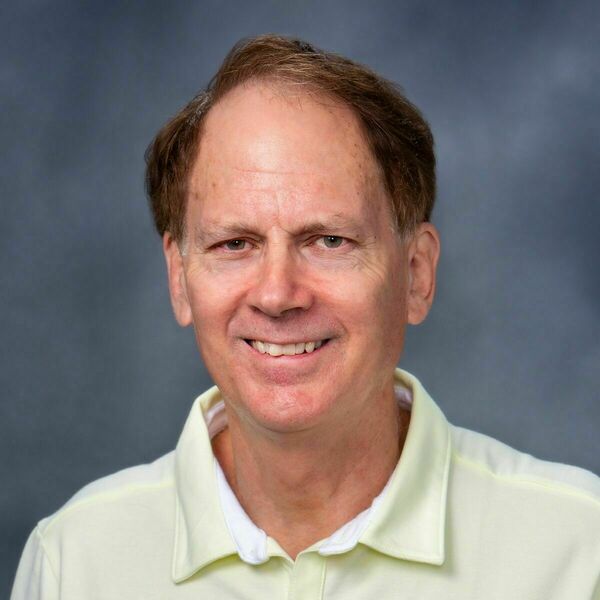
Mark Cummings, the William J. Shaw Center for Children and Families Professor of Psychology, is the 2021 recipient of the Bowlby-Ainsworth Award, bestowed by the New York Attachment Consortium. The citation reads: “For innovative research on the effects of early exposure to family violence and for conceptualizing and measuring the continuum of Emotional Security.”
For 20 years, the Bowlby-Ainsworth Award has recognized senior scholars who exemplify the standards of scholarship, collegiality and service that John Bowlby and Mary Ainsworth shared, taught, and valued. Selections are made by the Awards Committee of the Center For Mental Health Promotion and The New York Attachment Consortium, in consultation with previous recipients and
distinguished international colleagues.
Previous recipients include Robert Hinde (Cambridge), James & Joyce Robertson (Tavistock Clinic), L. Alan Sroufe (Minnesota), Mary B. Main (Berkeley), Marinus van IJzendoorn (Leiden), Jay Belsky (UC Davis), and Peter Fonagy (University College London), among others.
Mark Cummings recently sat down for an interview with Dan Lapsley, the ACE Collegiate Professor of Psychology, on the occasion of his receiving the 2021 Bowlby-Ainsworth Award
Congratulations on receiving this prestigious award. What was your reaction when you first learned of it?
In a bit of understatement, I am extremely pleased and honored to have received the Bowlby-Ainsworth award. Given that my work with Patrick Davies on Emotional Security Theory was inspired from the beginning as an extension of Bowlby and Ainsworth’s Attachment Theory to a family-wide (and later community) conceptualization of processes (especially emotional security) underlying children’s adjustment and development, this award is particularly affirming and meaningful.
What led you to take up this work?
My career choice in developmental psychology can be traced back to my decision as a sophomore premed major at Johns Hopkins University to take Mary Ainsworth’s course, which was based primarily on Bowlby’s new book on Attachment (which was only available in draft form at the time). Inspired by her course, I rethought my major and joined her lab as an undergrad RA.
What was your experience as an RA in Mary Ainsworth’s lab?
Our regular research meetings took place in a non-descript conference room in Ames Hall (the Psychology Department) but included undergrads (Everett Waters, Mark Greenberg) and grads (Mary Main, Inge Bretherton) who would later make significant contributions to the field but were, of course, unknown at the time. I eagerly volunteered to be the stranger in the newly developed Strange Situation methodology, but was, mysteriously, rejected for that role.
Yes, that is a complete mystery! So you were there at the beginning of the Strange Situation assessment of attachment. How was it being received in the field?
There was a lot of pushback against Attachment Theory at the time. My advisor, Wendell Jeffrey, who was Editor of Child Development, the most prestigious journal in Developmental Psychology, frequently asked me questions to help him make sense of this strange new theory.
So you joined Wendell Jeffrey at UCLA for your doctoral work, and then went on to NIH? [Editor’s Note. Check out the 7th paragraph in the Wendell Jeffrey link]
Yes, I did my doctoral work at UCLA in Developmental Psychology, with a minor in Experimental Psychopathology, with the latter supported by coursework in UCLA’s prominent Clinical Psychology program. After UCLA, I took a position at NIH’s intramural research facility in Bethesda, Maryland, in the Laboratory of Developmental Psychology.
Did you stay in touch with Mary Ainsworth?
I certainly kept in touch with Mary Ainsworth over the years, and I also reached out to John Bowlby. Bowlby wrote me a hand-written letter expressing admiration for my work (which I subsequently lost!). In the context of her new position at the University of Virginia, I visited her in Charlottesville several times, once joined by her grad student, Jude Cassidy and another time by Mary Main.
That must have been exciting getting a handwritten note from John Bowlby. Did you ever meet him?
Yes I did. While I was at NIH I was invited to be a keynote speaker in in a 2-week long celebration of Bowlby’s 80th Birthday in London hosted by the Tavistock Clinic, which is where Bowlby worked for many years. I appreciated the opportunity to visit Bowlby’s home and meet his family and I had dinner with Bowlby and a couple of other colleagues.
At dinner Bowlby noted that for many years he was not accepted in either the Melanie Klein or Anna Freud camps at Tavistock because he allowed (heretically!) for the role of experience in development. My keynote address was in front of literally hundreds, in which I spoke about attachment as a lifespan construct, including our recent work on the importance of attachment of grandparents to their adult children.
Those must have been heady days in the evolution of attachment theory, and you were there on the scene.
It was very exciting for sure. Over a period of nearly a decade I participated in meetings on attachment in the preschool years, organized by Mark Greenberg and supported by the MacArthur Foundation, culminating in a book [Editor’s Note: Attachment in the Preschool Years] that I co-edited with Greenberg and Dante Cicchetti. The discussions in these meetings were lively and groundbreaking in many ways, including, among others, Ainsworth, Main, Cassidy, Jay Belsky, as well as Greenberg, Cicchetti, and me, with Bowlby attending several meetings.
Thank you Mark for sharing your reminiscences about Mary Ainsworth and John Bowlby, and congratulations on this well-deserved award.
Thank you, this award is especially important to me and affirming for many reasons.